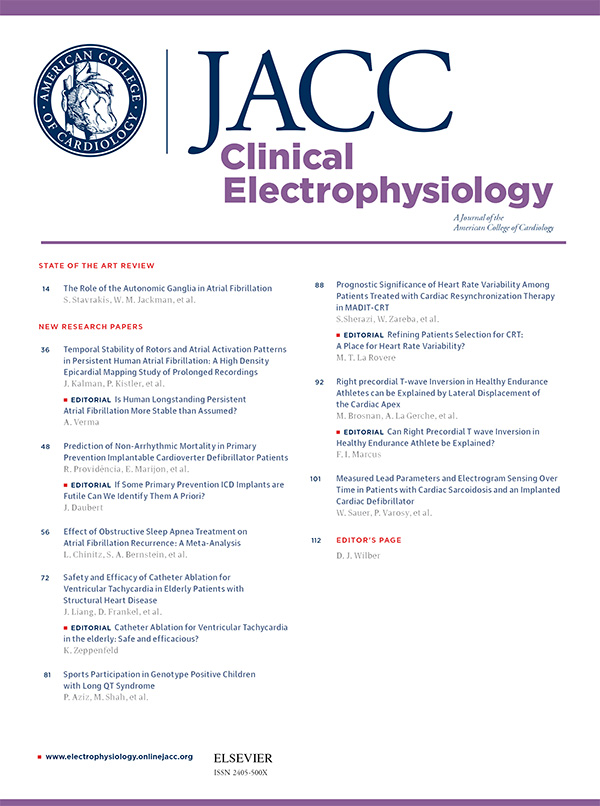NS-HBP vs. S-HBP in Patients Requiring Ventricular Pacing

Nonselective-His bundle pacing (NS-HBP) was associated with similar outcomes of death or heart failure hospitalizations when compared with selective (S)-HBP in patients with ≥20 percent ventricular pacing burden, based on findings presented at the Heart Rhythm Scientific Sessions in San Francisco, and simultaneously published in JACC: Clinical Electrophysiology.
Researchers, led by Pugazhendhi Vijayaraman, MD, FACC, analyzed 640 patients from the Geisinger and Rush University HBP registries who underwent successful HBP. Patients were categorized into S-HBP (n=118) or NS-HBP (n=232) groups based on QRS morphology at the programmed output at three months follow-up. The primary outcome was a combined endpoint of all-cause mortality or heart failure hospitalization.
Results found the NS-HBP group, compared with the S-HBP group, had a higher number of men (64 percent vs. 50 percent) and greater incidences of infranodal AV block (40 percent vs. 9 percent), ischemic cardiomyopathy (24 percent vs. 14 percent) and permanent atrial fibrillation (18 percent vs. 8 percent). The primary endpoint occurred in 35 percent of patients in the NS-HBP group compared with 19 percent in the S-HBP group. Researchers noted that further subgroup analyses of patients at higher pacing burden or lower left ventricular ejection fraction revealed no incremental risk with NS-HBP.
Looking ahead, Vijayaraman and colleagues recommend additional randomized or risk-matched multicenter studies with long-term follow-up in to confirm the clinical benefits of S-HBP vs. NS-HBP in patients needing ventricular pacing.
Clinical Topics: Arrhythmias and Clinical EP, Heart Failure and Cardiomyopathies, Implantable Devices, EP Basic Science, SCD/Ventricular Arrhythmias, Atrial Fibrillation/Supraventricular Arrhythmias, Acute Heart Failure
Keywords: Atrial Fibrillation, Bundle of His, Stroke Volume, Atrioventricular Block, Ventricular Function, Left, Heart Ventricles, Risk, Registries, Heart Failure, Hospitalization, Electrophysiology, Cardiomyopathies
< Back to Listings
